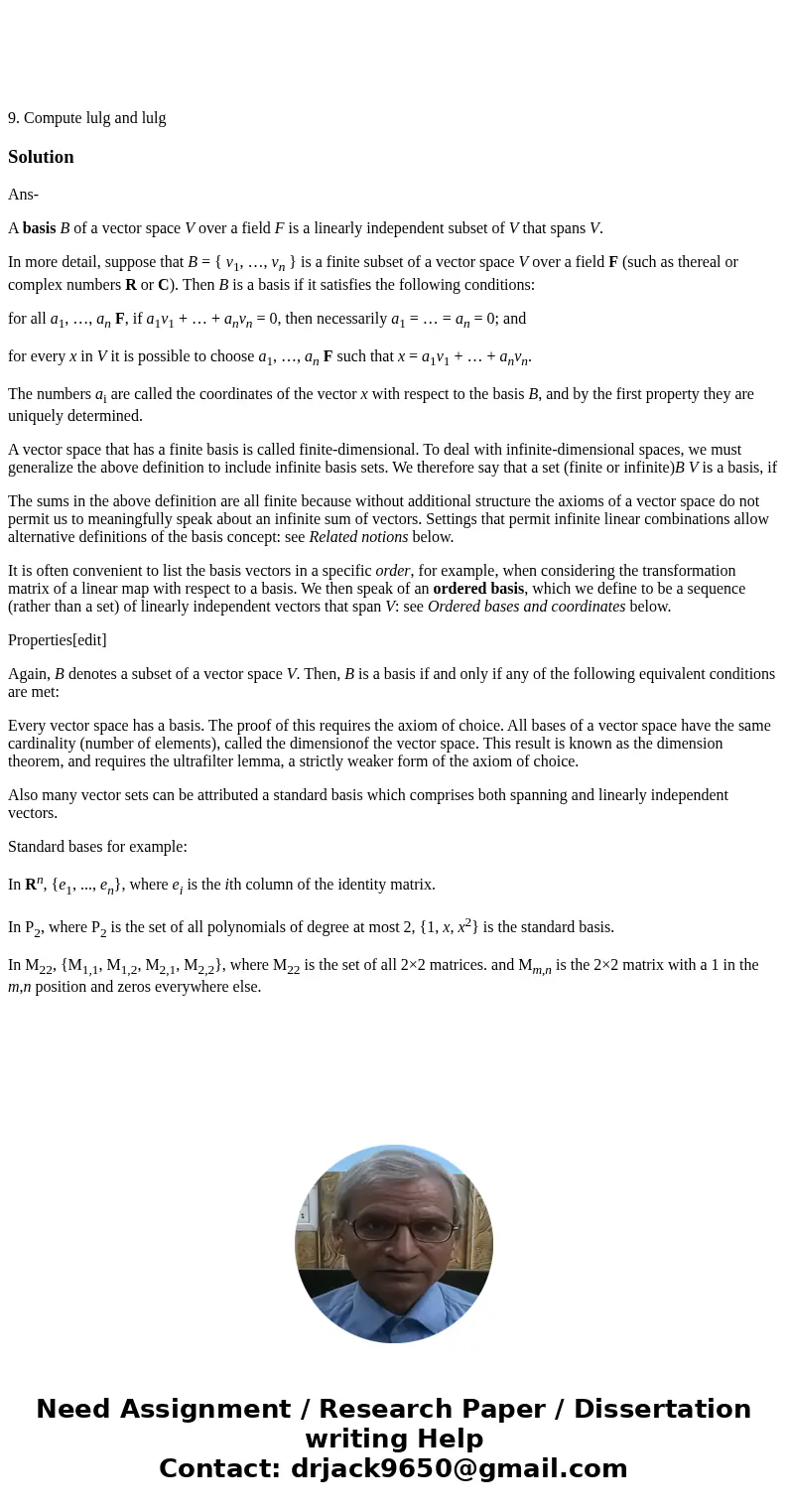9 Compute lulg and lulg SolutionAns A basis B of a vector sp
Solution
Ans-
A basis B of a vector space V over a field F is a linearly independent subset of V that spans V.
In more detail, suppose that B = { v1, …, vn } is a finite subset of a vector space V over a field F (such as thereal or complex numbers R or C). Then B is a basis if it satisfies the following conditions:
for all a1, …, an F, if a1v1 + … + anvn = 0, then necessarily a1 = … = an = 0; and
for every x in V it is possible to choose a1, …, an F such that x = a1v1 + … + anvn.
The numbers ai are called the coordinates of the vector x with respect to the basis B, and by the first property they are uniquely determined.
A vector space that has a finite basis is called finite-dimensional. To deal with infinite-dimensional spaces, we must generalize the above definition to include infinite basis sets. We therefore say that a set (finite or infinite)B V is a basis, if
The sums in the above definition are all finite because without additional structure the axioms of a vector space do not permit us to meaningfully speak about an infinite sum of vectors. Settings that permit infinite linear combinations allow alternative definitions of the basis concept: see Related notions below.
It is often convenient to list the basis vectors in a specific order, for example, when considering the transformation matrix of a linear map with respect to a basis. We then speak of an ordered basis, which we define to be a sequence (rather than a set) of linearly independent vectors that span V: see Ordered bases and coordinates below.
Properties[edit]
Again, B denotes a subset of a vector space V. Then, B is a basis if and only if any of the following equivalent conditions are met:
Every vector space has a basis. The proof of this requires the axiom of choice. All bases of a vector space have the same cardinality (number of elements), called the dimensionof the vector space. This result is known as the dimension theorem, and requires the ultrafilter lemma, a strictly weaker form of the axiom of choice.
Also many vector sets can be attributed a standard basis which comprises both spanning and linearly independent vectors.
Standard bases for example:
In Rn, {e1, ..., en}, where ei is the ith column of the identity matrix.
In P2, where P2 is the set of all polynomials of degree at most 2, {1, x, x2} is the standard basis.
In M22, {M1,1, M1,2, M2,1, M2,2}, where M22 is the set of all 2×2 matrices. and Mm,n is the 2×2 matrix with a 1 in the m,n position and zeros everywhere else.

 Homework Sourse
Homework Sourse